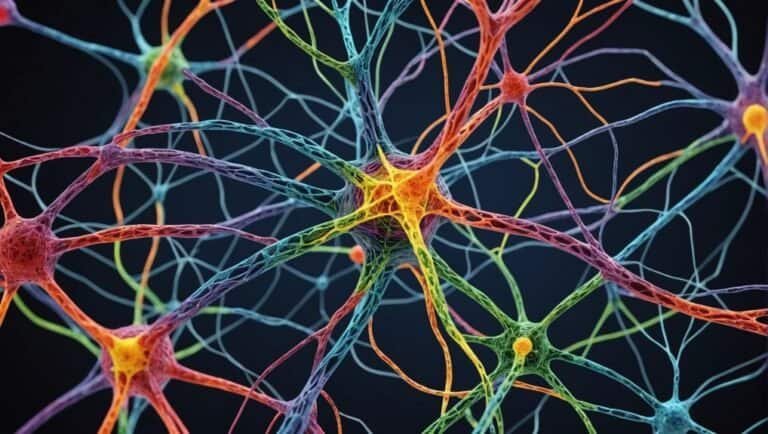Understanding Spiritual Emergency: A Guide
“The most beautiful people we have known are those who have known defeat, known suffering, known struggle, known loss, and have found their way out of those depths. These persons have an appreciation, a sensitivity, and an understanding of life that fills them with compassion, gentleness, and a deep loving concern. Beautiful people do not just happen.” – Elisabeth Kübler-Ross
Life often presents us with unexpected challenges, pushing us beyond our limits and forcing us to confront the depths of our being. One such profound crisis is a spiritual emergency, a transformational crisis that can be both unnerving and awe-inspiring. During this process, our habitual ego and sense of reality collapse, opening doors to a different realm of understanding.
A spiritual emergency can be characterized by a profound sense of connection to all things, a transcending of time and space, and a deep sense of meaning and awe. However, it can also be messy, painful, and terrifying. It may entail experiences such as mania, ego inflation, insomnia, voices, visions, and emotional disturbance. Unlike a psychotic illness, a spiritual emergency can lead to growth if managed with sensitivity.
In this comprehensive guide, we will explore the nuances of spiritual emergencies, their relationship to psychosis, common triggers, the range of experiences one may encounter, and coping strategies to navigate this transformative journey. Through understanding and embracing this profound process, we can embark on a path of personal growth and expanded consciousness.
Key Takeaways:
- A spiritual emergency is a sudden collapse of one’s habitual ego and customary sense of reality, leading to an opening to a different reality.
- There is an overlap between spiritual experiences and psychosis, and the transpersonal perspective recognizes the positive aspects of spiritual experiences, coining the term “spiritual emergency”.
- Triggers for spiritual emergencies can include unresolved trauma, genetic predisposition, physical isolation, and difficult life transitions.
- In a spiritual emergency, individuals may experience ego dissolution, a collapse of boundaries between the self and others, and deep ontological uncertainty.
- Coping strategies for spiritual emergencies involve creating a supportive set and setting, cultivating mindfulness, using breathwork techniques, practicing humility, and integrating the experience.
The Overlap Between Spiritual and Psychotic Experiences
When exploring the realm of spiritual experiences, it is essential to acknowledge the potential overlap with psychotic experiences. Traditionally, psychiatry has often regarded all religious or transcendent encounters as pathological manifestations of psychosis. However, a growing number of psychologists and psychiatrists propose a different perspective known as the transpersonal perspective.
The transpersonal perspective acknowledges that some experiences can have both spiritual and quasi-psychotic qualities. This viewpoint recognizes the positive aspects of spiritual encounters and has even coined the term “spiritual emergency” to describe such experiences. By reframing these episodes, individuals can better understand and navigate the complex terrain of spiritual and psychological phenomena.
Psychologists and psychiatrists approaching spiritual emergencies from a transpersonal perspective emphasize the significance of distinguishing between psychosis and spiritual crises. They contend that while there may be similarities in terms of manifestations, motivations, and behaviors, spiritual emergencies are not solely characterized by distress and dysfunction. Instead, they can be transformative moments that offer profound opportunities for growth and self-discovery.
“The transpersonal perspective invites us to embrace the coexistence of the spiritual and the psychological, allowing for a deeper exploration of human consciousness and the interconnectedness of all aspects of human experience,” says Dr. Jane Thompson, renowned psychologist and author.
By acknowledging and studying the overlap between spiritual and psychotic experiences, mental health professionals can offer more holistic and compassionate support to individuals going through spiritual emergencies. This approach promotes a deep understanding of the complexities inherent in these encounters, ultimately fostering greater empathy and effective treatment strategies.
The Role of Transpersonal Psychology
Transpersonal psychology delves into the exploration of spirituality and the expansion of consciousness within the context of human experiences. It offers a framework that acknowledges the profound impact of spiritual experiences, including spiritual emergencies, on individuals’ well-being and personal growth.
| Psychotic Experiences | Spiritual Emergencies |
|---|---|
| Marked by distress, dysfunction, and impaired reality testing | Characterized by profound transformative potential and personal growth |
| Primarily viewed through a pathological lens by traditional psychiatry | Recognized as meaningful experiences with potential positive outcomes |
| Treated with antipsychotic medications and psychotherapy focused on symptom management | Nurtured through supportive therapy that focuses on integration and personal development |
Transpersonal psychology encourages mental health professionals to approach spiritual emergencies with an open mind and a holistic perspective. By incorporating transpersonal principles into their practice, clinicians can provide more nuanced and compassionate care to individuals undergoing spiritual crises. This approach allows for a profound exploration of the intersectionality between spirituality and mental health, leading to comprehensive healing and growth.
Through a well-informed understanding of the overlap between spiritual and psychotic experiences, individuals experiencing spiritual emergencies can receive the support they need to navigate their journeys. By adopting a transpersonal perspective, mental health professionals embrace the complexity of these encounters and foster an environment of healing, growth, and realization of the transformative potential inherent in these unique experiences.
Triggers for Spiritual Emergencies
When it comes to spiritual emergencies, certain triggers can contribute to their occurrence. These triggers encompass a range of factors, such as unresolved trauma, genetic predisposition to altered states, physical isolation, and difficult life transitions.
Unresolved Trauma
Unresolved trauma can play a significant role in triggering spiritual emergencies. Traumatic experiences can create an ego structure that is more susceptible to spiritual experiences, as they can disrupt one’s sense of self and open the door to profound transformation.
Genetic Predisposition
Genetic factors can also contribute to the occurrence of spiritual emergencies. Some individuals may have a predisposition towards altered states of consciousness, making them more likely to experience profound spiritual phenomena.
Isolation
Physical isolation can be another trigger for spiritual emergencies. When individuals find themselves alone or disconnected from social support systems, they may be more vulnerable to experiencing spiritual crises. Isolation can intensify feelings of existential uncertainty and create fertile ground for transformative experiences.
Difficult Transitions
Difficult life transitions can also act as triggers for spiritual emergencies. Challenging moments, such as the loss of a loved one, career changes, or relationship upheaval, can disrupt our sense of identity and reality. These transitions may provide fertile ground for spiritual exploration and upheaval.
Understanding these triggers can help shed light on the factors that contribute to spiritual emergencies. By recognizing the potential impact of unresolved trauma, genetic predisposition, isolation, and difficult transitions, individuals can navigate these experiences with greater awareness and support.
Table: Triggers for Spiritual Emergencies
| Trigger | Description |
|---|---|
| Unresolved Trauma | Experiences of past trauma that remain unresolved and can contribute to ego disruption and spiritual exploration. |
| Genetic Predisposition | Individuals with a genetic predisposition to altered states of consciousness may be more prone to spiritual emergencies. |
| Isolation | Physical isolation from social support systems can intensify feelings of existential uncertainty and create an environment conducive to spiritual crises. |
| Difficult Transitions | Challenging life transitions, such as loss, career changes, or relationship upheaval, can disrupt one’s sense of identity and reality, potentially leading to spiritual exploration. |
What a Spiritual Emergency Feels Like
In a spiritual emergency, individuals may experience a profound dissolution of the ego, resulting in a collapse of boundaries between the self and others. This intense and transformative experience can bring about a deep sense of ontological uncertainty.
During a spiritual emergency, individuals often feel a sense of disorientation, as their habitual ego and sense of reality undergo dissolution. The boundaries that once defined their identity and separated them from others become blurred, allowing for a profound interconnectedness with the world.
Accompanying this collapse of boundaries, individuals may also encounter intense surges of energy, visions, and voices. These mystical experiences can be both awe-inspiring and terrifying, as they challenge the individual’s familiar perception of reality and offer glimpses into the expanded nature of consciousness.
It is important to note that a spiritual emergency is not merely a fleeting moment or a passing mood; rather, it is a profound and enduring state of being. This heightened state of consciousness brings with it a deep ontological uncertainty, as individuals grapple with questions of the nature of existence and their place in the world.
The dissolution of the ego and collapse of boundaries experienced in a spiritual emergency can be likened to the shedding of old layers, paving the way for the emergence of a new and expanded sense of self. While the journey through a spiritual emergency may be challenging, it offers the potential for profound personal growth and transformation.
“During a spiritual emergency, individuals often find themselves caught between the beauty and terror of the unknown, as they navigate the dissolution of their familiar sense of self and reality.”
Illustrative Case Study
Emma, a 34-year-old woman, experienced a profound spiritual emergency following a near-death experience. After her encounter with death, Emma’s ego dissolved, and she found herself perceiving the world in a completely new way. Boundaries between herself and others disappeared, and she felt intimately connected to everything around her.
She experienced a sense of oneness with nature, and her perceptions expanded to include vivid visions and an array of sensory experiences. At times, this state of heightened awareness felt overwhelming, as Emma had to navigate the uncertainty and disorientation that accompanied the dissolution of her familiar self. However, through therapy, support groups, and various spiritual practices, she was able to find grounding and integrate her transformative experience into her daily life.
| Common Experiences in a Spiritual Emergency | Coping Strategies |
|---|---|
| Ego dissolution | Practicing mindfulness and self-compassion |
| Collapse of boundaries between self and others | Engaging in grounding techniques, such as breathwork |
| Ontological uncertainty | Seeking support from therapists and spiritual mentors |
The case study of Emma illustrates the profound and complex nature of a spiritual emergency. While the experience may vary from individual to individual, the common themes of ego dissolution, boundary collapse, and ontological uncertainty are often present. Navigating a spiritual emergency requires compassion, support, and a willingness to embrace the unknown.
Up next, we will explore coping strategies for individuals experiencing a spiritual emergency and how to navigate this transformative process.
Coping Strategies for Spiritual Emergencies
In the midst of a spiritual emergency, it is essential to have effective coping strategies in place. These strategies can provide support, grounding, and guidance during this challenging and transformative process. Here are some key coping strategies to consider:
Create a Supportive Set and Setting
A supportive set and setting can greatly contribute to navigating a spiritual emergency. This involves surrounding yourself with understanding and empathetic individuals who can offer emotional support and guidance. Seek out communities, therapists, or spiritual mentors who have experience in this area. Having a safe and supportive environment can help alleviate feelings of isolation and provide reassurance during the journey.
Cultivate Mindfulness
Mindfulness is an invaluable practice for individuals experiencing a spiritual emergency. It involves cultivating awareness of the present moment, without attaching judgment or resistance to the thoughts and emotions that arise. By staying present and observing experiences without attachment or aversion, individuals can create a sense of inner stability and navigate the intense sensations and emotions that arise during a spiritual emergency.
Utilize Breathwork Techniques
One effective grounding technique for coping with a spiritual emergency is breathwork. The breath is a powerful tool for calming the nervous system, enhancing presence, and connecting to the body. By consciously regulating the breath through techniques such as deep diaphragmatic breathing or alternate nostril breathing, individuals can cultivate a sense of balance and stability amidst the transformative experiences of a spiritual emergency.
Practice Humility
Humility is an important attitude to adopt during a spiritual emergency. It involves acknowledging the limitations of one’s own understanding and embracing a willingness to learn and grow. Recognizing that the spiritual journey is a humbling process can help individuals maintain an open mind, foster compassion for themselves and others, and prevent the potential pitfalls of ego inflation.
Integration of the Experience
Integration is a crucial component of coping with a spiritual emergency. It involves processing and assimilating the insights, experiences, and transformations that arise during this intense period. Integration can take various forms, such as journaling, artwork, therapy, or spiritual practices. By actively engaging in the integration process, individuals can bring about a more holistic understanding of their spiritual emergency and move forward with newfound wisdom and growth.
Incorporating these coping strategies can support individuals through the challenges and opportunities presented by a spiritual emergency. By creating a supportive set and setting, cultivating mindfulness, utilizing breathwork techniques, practicing humility, and actively integrating the experience, individuals can navigate this transformative journey with resilience and profound personal growth.
The Mechanics of Awakening
The process of spiritual awakening involves profound shifts in consciousness and self-awareness. As individuals embark on this transformative journey, they may encounter latent traumas, undergo changes in beliefs, and confront societal conditioning.
One of the key aspects of spiritual awakening is the surfacing of latent traumas into conscious awareness. These traumas, which were once hidden or repressed, come to the forefront to be acknowledged, processed, and ultimately healed. The awakening process provides an opportunity for individuals to confront and release the emotional, mental, and physical wounds that have been buried deep within their psyche.
Alongside the healing of traumas, spiritual awakening brings about changes in beliefs and perceptions. As individuals expand their consciousness, their understanding of themselves and the world around them undergoes a fundamental shift. Long-held belief systems may be challenged, leading to a reevaluation of values, priorities, and personal truths. This process of belief changes allows for a deeper connection to one’s authentic self and a more expansive view of reality.
Moreover, spiritual awakening involves an examination of conditioned beliefs and societal expectations. Throughout our lives, we are influenced by external factors that shape our thoughts, behaviors, and identities. As individuals awaken, they question the conditioning they have internalized, dismantling the societal constructs and expectations that no longer resonate with their true essence.
“Spiritual awakening is a process of uncovering the layers of conditioning and healing the traumas that have shaped our perception of reality.”
As individuals navigate the awakening process, they engage in a holistic approach to healing their past traumas and examining their conditioned beliefs. This involves emotional introspection, mental reframing, and physical well-being. Various practices and modalities such as therapy, meditation, bodywork, breathwork, and energy healing can support individuals in their healing and transformation.
It is crucial to emphasize that the mechanics of awakening are unique to each individual. The journey unfolds in its own time and manner, guided by the individual’s readiness and willingness to face their traumas, challenge their beliefs, and release societal conditioning.
| Latent Traumas | Belief Changes | Conditioning |
|---|---|---|
| Resurface into conscious awareness | Challenges long-held beliefs | Examines societal conditioning |
| Emotional, mental, and physical healing | Reevaluation of values and personal truths | Dismantles societal constructs |
| Unique to each individual | Expands consciousness | A more authentic self |
Understanding Spiritual Emergency: Emergence
In the process of spiritual emergency, there is both a breakdown and a re-emergence. This transformative journey can result in minor shifts or a complete transformation of one’s being. The breakdown phase allows for the release of past conditioning and traumas, creating space for growth and expansion. It involves encountering and processing past traumas, conditioning, and societal expectations.
The re-emergence phase leads to the emergence of a new self with a more connected and expanded view of reality. As individuals navigate this process, they confront their past traumas head-on and actively work towards healing and integration. This journey of emergence involves shedding old layers, beliefs, and identities to make room for a higher state of consciousness.
“The breakdown is not the end, but rather the beginning of a profound transformation.”
Throughout this process, individuals have the opportunity to explore their deepest wounds, challenge their conditioned beliefs, and embrace their true nature. It can be a challenging and emotionally intense experience, but it also holds immense potential for personal growth and spiritual evolution.
A Journey of Breakdown and Re-emergence
During the breakdown phase, individuals may experience a sense of disintegration as their former self dissolves. This dissolution allows for the release of limiting beliefs and cultural conditioning. It can be accompanied by feelings of confusion, loss, and uncertainty as one navigates the unknown territory of self-discovery.
The re-emergence phase marks the transformative shift as the individual begins to rebuild and reconstruct their identity from a place of authenticity and connection. This process involves integrating the lessons learned from past traumas and incorporating new perspectives into one’s view of the world.
Expanding Consciousness and Connection
As individuals emerge from a spiritual emergency, their expanded consciousness and sense of connection to the world deepen. They develop a greater understanding of the interrelatedness and interdependence of all things. This expanded awareness allows for a more profound and meaningful engagement with life.
Through the journey of emergence, individuals transcend their previous limitations and cultivate a deep sense of interconnectedness, compassion, and empathy. They become agents of positive change, motivated by their expanded consciousness to contribute to the well-being of others and the collective.
In the midst of a spiritual emergency, the emergence process unfolds, leading individuals towards a more authentic and expansive existence. It is a transformative journey where old patterns crumble, and new insights and understandings come to light. As individuals navigate the breakdown and re-emergence, they embark on a path of growth, expansion, and true self-discovery.
Navigating Spiritual Emergency
Navigating a spiritual emergency can be a challenging process, especially when faced with feelings of overwhelm, intense emotions, and a lack of societal support. During this transformative journey, it is crucial to seek assistance from professionals, mentors, or supportive communities who can provide valuable guidance and validation.
Therapists who specialize in spiritual emergencies can offer insights and strategies to help individuals cope with the overwhelming experiences they may encounter. They can provide a safe space for exploration and understanding, enabling individuals to navigate their spiritual journey with greater ease.
Spiritual mentors or teachers who possess deep understanding and experience in spiritual awakening can also serve as valuable resources. Their wisdom, guidance, and teachings can help individuals make sense of their experiences and provide support throughout their journey.
Engaging with supportive communities can be immensely beneficial, as connecting with others who have gone through or are going through similar experiences can provide a sense of belonging and reassurance. These communities can offer valuable support, shared wisdom, and a sense of validation that can alleviate feelings of isolation.
Additionally, it is crucial to prioritize self-care during a spiritual emergency. Engaging in mindfulness practices can help individuals stay grounded and present in the midst of intense emotions or overwhelming experiences. Breathwork techniques offer a powerful tool for calming the mind and reconnecting with the body.
Establishing healthy coping strategies tailored to individual needs is essential. These may include regular exercise, journaling, creative expression, or engaging in activities that nourish the mind, body, and soul.
Remember, navigating a spiritual emergency is a deeply personal and transformative process. It may take time, patience, and resilience to fully integrate the experiences and insights gained. By seeking assistance, prioritizing self-care, and embracing the support of communities, individuals can journey through their spiritual emergency with greater ease, finding spaces that nurture healing and growth.
Conclusion
Spiritual emergencies are profound personal crises that can lead to transformative experiences and personal growth. While they may be challenging and chaotic, these emergencies provide an opportunity for individuals to transcend their sense of self and connect with a deeper reality. By understanding the nature of spiritual emergencies, using coping strategies, seeking assistance, and embracing the process of emergence, individuals can navigate these experiences for spiritual growth and expanded consciousness.
During a spiritual emergency, individuals may encounter a collapse of their habitual ego and sense of reality, leading to an opening for personal transformation. It is important to approach these experiences with care and utilize coping strategies such as mindfulness and breathwork to navigate the intense surges of energy and disorientation that may arise. Seeking assistance from therapists, spiritual mentors, or supportive communities can also provide guidance and validation during this transformative process.
By embracing the journey of a spiritual emergency, individuals have the opportunity to process unresolved traumas, examine conditioned beliefs, and release past conditioning. This process of emergence allows for the re-emergence of a new self, characterized by a deeper connection to reality and a more integrated view of the world. Ultimately, spiritual emergencies can be pathways to personal growth and expanded consciousness, leading to a richer and more meaningful life.
FAQ
What is a spiritual emergency?
A spiritual emergency is a sudden collapse of one’s habitual ego and sense of reality, leading to an opening to a different reality. It can involve a deep sense of connection to all things, transcending time and space, and a profound meaning and awe. However, it can also be messy and painful, with features like mania, insomnia, voices, and visions.
Is there an overlap between spiritual experiences and psychosis?
Yes, there is an overlap between spiritual experiences and psychosis. While psychiatry historically viewed all religious experiences as pathological, some psychologists and psychiatrists recognize that an experience can be both spiritual and quasi-psychotic. This perspective, known as the transpersonal perspective, acknowledges the positive aspects of spiritual experiences and coined the term “spiritual emergency.”
What can trigger a spiritual emergency?
Triggers for spiritual emergencies can include unresolved trauma, genetic predisposition to altered states, physical isolation, and difficult life transitions. Trauma can create an ego structure that is more prone to spiritual experiences, and genetic factors can contribute to a predisposition towards altered states of consciousness. Spiritual crises can occur during moments of isolation or challenging life transitions.
What does a spiritual emergency feel like?
In a spiritual emergency, individuals may experience ego dissolution, a collapse of boundaries between the self and others, and deep ontological uncertainty. There can be a profound sense of disorientation and loss of separate self, accompanied by intense surges of energy, visions, and voices. This state can be both beautiful and terrifying as individuals navigate the dissolution of their habitual ego and sense of reality.
What are the coping strategies for spiritual emergencies?
Coping strategies for spiritual emergencies involve creating a supportive set and setting, cultivating mindfulness, using breathwork techniques, practicing humility, and integrating the experience. Mindfulness helps individuals stay present and observe their experiences without attachment or aversion. Grounding techniques like breathwork can calm emotions and connect individuals to their bodies. Humility helps individuals maintain a balanced perspective, while integration allows for the processing and integration of the spiritual experience.
What happens during the spiritual awakening process?
During the spiritual awakening process, latent traumas arise into conscious awareness to be processed. These traumas were previously lived out without awareness and have led to changes in beliefs and perceptions. The awakening process involves the recognition and healing of past traumas, as well as the examination of conditioned beliefs and societal expectations. The processing of these traumas and beliefs is emotional, mental, and physical, requiring holistic healing approaches.
How does spiritual emergency lead to emergence?
Spiritual emergency involves a breakdown and re-emergence process. It can range from minor shifts to complete transformations of one’s being. The breakdown allows for the release of past conditioning and traumas, while the re-emergence leads to the emergence of a new self and a more connected view of reality. This process often involves encountering and processing past traumas, conditioning, and societal expectations.
How can one navigate a spiritual emergency?
Navigating a spiritual emergency can be challenging, especially when dealing with overwhelm, intense emotions, and a lack of societal support. Seeking assistance from therapists, spiritual mentors, or supportive communities can provide guidance and validation during the process. It is important to prioritize self-care, establish healthy coping strategies, and find spaces that nurture healing and growth.
What is the outcome of a spiritual emergency?
Spiritual emergencies are profound personal crises that can lead to meaningful transformation and growth if navigated with care. While they can be messy and challenging, they offer the opportunity to transcend the self and connect with a deeper sense of reality. By understanding the nature of spiritual emergencies, utilizing coping strategies, seeking assistance, and embracing the process of emergence, individuals can navigate these experiences for spiritual growth and expanded consciousness.







